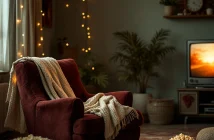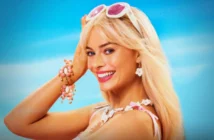Within a five year period, Disney released The Little Mermaid, Beauty and the Beast, Aladdin, and The Lion King. Give them six more, and they’ve knocked out Pocahontas, Notre Dame, Hercules, Mulan and Tarzan. Disney even earned their first Best Picture nomination with Beauty and the Beast. Is it really the case that our childhood had the best ever crop of Disney films? And is it sacrilege to term this creative explosion the “Disney Renaissance”? Probably; but let’s do it anyway.
The likelihood is, if you grew up in the early nineties, you probably spent a lot of time watching and rewatching the Disney classics. I know when I was small, we had The Jungle Book and The Sword in the Stone (both classics – but I have to admit even tiny me found them dull) but we also had The Little Mermaid and The Lion King, with which I was completely fixated. I would happily watch them again, and again, and again. I think my parents are fortunate I was their last child – I fear a little brother or sister would frequently have been held up on the sofa by a precariously perched Dom trying to dramatically recreate the Pride Rock scene in a South London abode.
The truth of the matter is that, in the mid 80s, Disney almost had to entirely shut down its animation department. It seemed audiences were growing tremendously tired of traditional, hand-drawn animation, and Disney’s creative juices were being wasted on dirge like The Black Cauldron – critically hated and a commercial flop. Indeed, the team were so convinced they were all about to be fired they filmed a re-enactment of Apocalypse Now in what they believed was their last week.
Disney, being the behemoth it is, managed to nab some key talent from the other big studios. What’s more, by the late 80s, the Disney coffers were being propped up by new fangled technology – the VHS. The steady release of Disney’s classic movies on home video (whilst allowing us to obsessively watch our favourite films) were like a license to print money, since there was little cost to rereleasing their old titles.
Back at the Disney studios, the animation team found themselves facing far more open-minded management. “You can’t fall off the first floor” joked new head of animation Peter Schneider. Anyone, even the janitor, could pitch an idea – if they liked it, it would get greenlit – if they didn’t, said proposal would be given a sonorous gong. I’m presuming most of the team went home and read their kid’s books – judging by the output of the studio – but a return to the European fairytale is certainly where Disney ended up.
Probably Disney’s smartest move was its return to its musical origins. More than likely, if someone mentions The Lion King or Beauty and the Beast to you, ‘Circle of Life’ or ‘Be Our Guest’ (or perhaps The Simpsons’ musical derivate, ‘See My Vest’) pop into your head. Save for the odd hit, in the 70s, 80s and 90s, the musical had been in steady decline, so wasn’t necessarily an assured route to success for Disney.
Wheeling in the talent from campy 80s show Little Shop of Horrors, everyone at Disney knew they had struck gold as soon as they heard Alan Menken and Howard A shman’s ‘Under the Sea’. “There was electricity in the air,” chuffs Jeffrey Katzenberg, head of film at Disney at the time; “there was real genius at work, and people knew it”. “It had this feeling of a freight train leaving the station at light speed … everyone was firing on all cylinders” adds Don Hahn, senior producer at Disney.
shman’s ‘Under the Sea’. “There was electricity in the air,” chuffs Jeffrey Katzenberg, head of film at Disney at the time; “there was real genius at work, and people knew it”. “It had this feeling of a freight train leaving the station at light speed … everyone was firing on all cylinders” adds Don Hahn, senior producer at Disney.
Ashman and Menken were a virtuoso team, crafting the songs for The Little Mermaid and Beauty and the Beast in a brief two-year period. However, Howard Ashman tragically died of AIDS whilst writing the lyrics for Aladdin. Disney immediately brought in long-time Andrew Lloyd-Webber collaborator Tim Rice to complete the unfinished songs with Menken, before Rice started working on The Lion King (originally known to the team as Bambi in Africa). It was here Disney pulled the rabbit out of the hat, by roping-in Elton John to co-write the tunes. In my eyes, this was the key to the Golden Age of Disney – bringing in great composers to create some truly fantastic songs.
Disney also produced some of their finest characters during this ten year period. The Beast, gradually humanised by Belle, is surprisingly deep for a kids cartoon character, as is Mufasa, Simba’s legendary papa who gets bumped off pretty sharpish. And then there’s the Genie, far and away their funniest creation. Casting Robin Williams was a stroke of genius. A Jamaican lobster was an inspired turn to boot. At the same time, some of the villains were absolutely brilliant – there’s vocal-thief Ursala, the hilarious steroid-pumping Gaston and most memorable of all, Scar, a villain ripped straight out of Shakespeare (although Iago would have been a better name for this Machiavellian feline rather than for Jafar’s sassy parrot).
The visuals in the renaissance period films are superlative, in large part thanks to the introduction of CAPS (Computer Animation Post-Production System) which greatly sped up the inking process and enabled images to be digitally assembled, allowing for such grand, sweeping shots like we see at the end of Beauty and the Beast in the ballroom scene. CAPS was being worked on in a small computer-graphics firm in Point Richmond, California.
That company was Pixar. Some (read: me) might argue that Disney more or less passed the torch to Pixar by 1995 when they released Toy Story; their ethos, ‘the only bad idea is the one that’s not said out loud,’ was instilled at Pixar from the get-go since this is exactly what Disney lived by at the time. Sadly Disney ran the European fairytale/musical tropes down to the ground by the late 90s, but Pixar succeeded in consistently attempting new kinds of story and characterisation.
Disney were a creative po wer-house in the 90s. The films they produced in this period rank amongst their very best work, and the songs, timeless classics. There can be no doubt that this was a golden age for the company. Although the 2000s proved a dry spell for Disney’s own animation department, it’s not too much of a stretch of the imagination to envisage that we might be seeing the beginning of a Third Coming – last year’s release The Princess and the Frog is masterful – the songs are undeniably some of their strongest work, and the characterisation is fantastic. Equally, this year’s Tangled is a real laugh, with brilliant characters and awe-inspiring visual work. Significantly, it also marks the first time they’ve melded wholesale computer animation with classic fairytales and the musical tradition.
wer-house in the 90s. The films they produced in this period rank amongst their very best work, and the songs, timeless classics. There can be no doubt that this was a golden age for the company. Although the 2000s proved a dry spell for Disney’s own animation department, it’s not too much of a stretch of the imagination to envisage that we might be seeing the beginning of a Third Coming – last year’s release The Princess and the Frog is masterful – the songs are undeniably some of their strongest work, and the characterisation is fantastic. Equally, this year’s Tangled is a real laugh, with brilliant characters and awe-inspiring visual work. Significantly, it also marks the first time they’ve melded wholesale computer animation with classic fairytales and the musical tradition.
After Walt’s death in 1966, Disney struggled to find a new way to carry on under the same brand without their guiding light. For twenty years, they were despondant, but the Nineties saw Disney return to the very top of their game, with a little bit of Pixar’s help (and with the company firmly strapped under their corporate belt). Disney are finally receiving the critical reception they’ve deserved; since 1991, with Beauty and the Beast, Up, and Toy Story 3, they’ve received three Best Picture nominations at the Oscars. Without a doubt, it’s going to take a lot to knock them off their perch again.




